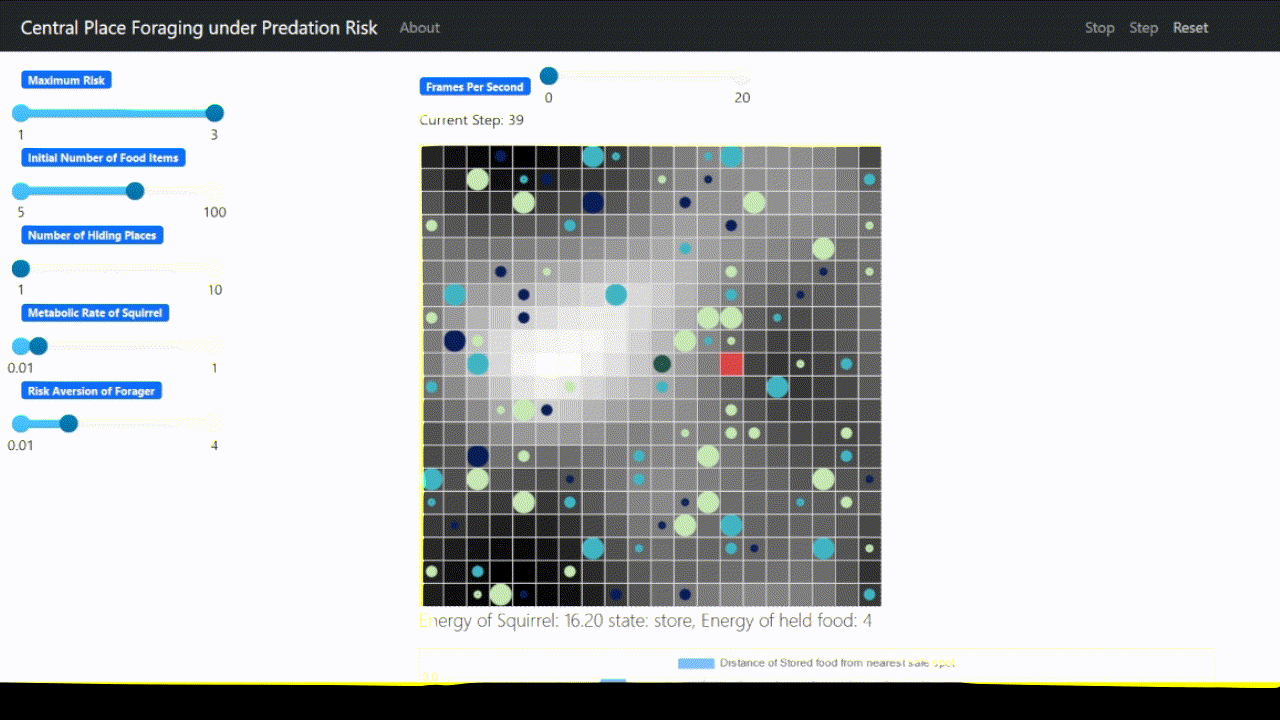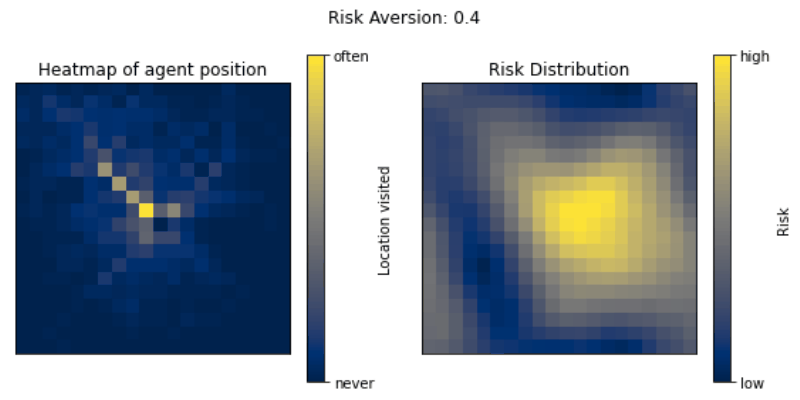This is an agent-based model of central place foraging in Python, using the Mesa framework. It simulates a food foraging agent (let's say a squirrel) in a landscape with spatially varying danger. The agent can differ in its risk aversion, i.e. how likely it is to choose food from risky patches. Currently, the agent cannot die, i.e. making risky choices does not have negative consequences. This is a future feature to be implemented.
Mesa allows for an interactive visualization of the simulation using the server.py script.
- mesa
- gaussian_random_fields (please use this fork, it enables setting a random seed manually: https://github.com/syntheticdinosaur/gaussian-random-fields)
- matplotlib
- seaborn
- numpy
- nest_asyncio (depends on your IDE; I needed it for Spyder 5)
- pathfinding (https://github.com/brean/python-pathfinding)
for specific versions see requirements.txt
Here you can see a visualisation of the model. The agent traverses a grid environment in which food is placed. With each step through the model, the agent uses up a certain amount of energy. Eating food replenishes energy. Food has two important properties: Energy yield and handling time. A forager tries to find food that gives him the maximum amount of energy for the shortest amount of handling time (think of the difficulty of eating a cookie vs eating a walnut).
Further, different grid squares have a different risk associated with them. The agent tries to balance the search for food and risk taking. The risk distribution is generated using random gaussian fields so that more vs. less risky areas are spread in a sensible manner.
The foraging agent has a risk aversion parameter. The higher the risk aversion, the more it will try to exclude risky areas from the search for food, and the less likely it is to traverse through risky areas when bringing food back to its central place.
When going around, the agent decides whether to eat food immediatly to restore energy or whether to forage food. For this, there is also a calculation of the net energy return of a given food item, i.e. energy spend getting and possibly storing it vs. energy to be gained. Collected food is gathered at the central place (e.g., the green circle in the visualization beneath)
Lies around, waiting to be eaten.
Walks around, eats and collects food.
Where food is stored.
- batchrunner
- agent death implementation
- smarter 'foraging vs. eating' decision
- increase visualizaiton efficiency (currently it crowds the agent space)
- better fit to existing ecological models
- visualization for Jupyter Notebooks
- General refactoring
- add list of dependencies
- implement testing procedures (unit test etc.)

